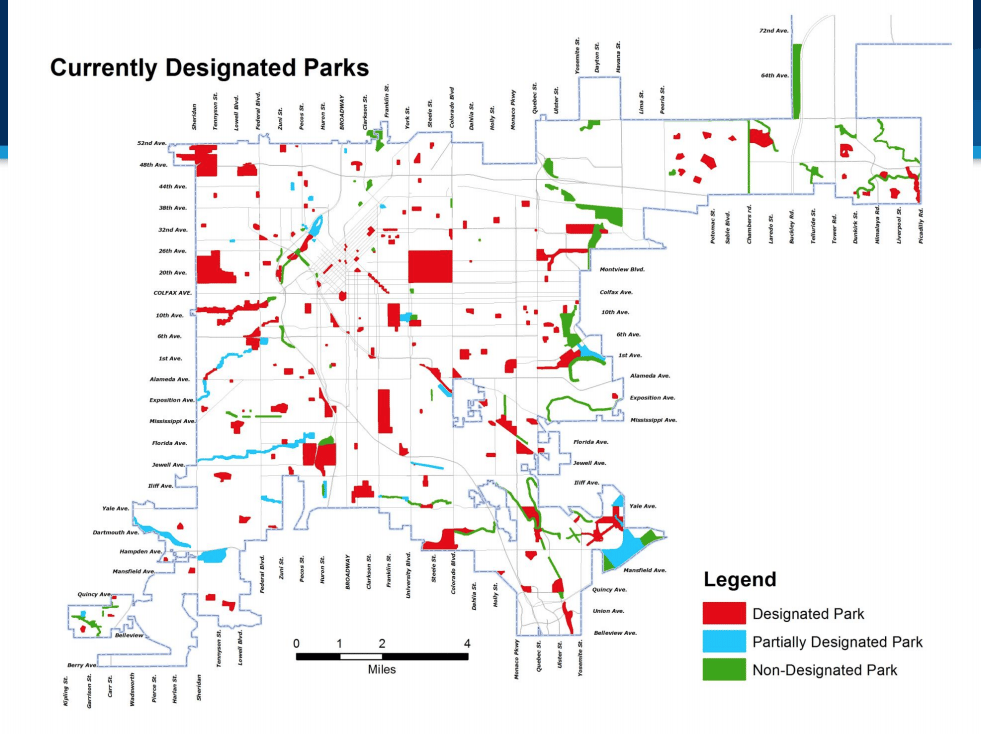
A controversial 2013 land swap spurred Denver Parks And Recreation to make sure hundreds of acres of parkland throughout the city could only be sold with voters' permission.
Denver City Council is expected to protect another 180 acres of land in Hampden Heights West Park, Town Center and other areas through a process called designation, with an initial vote Monday and a second reading in December.

Not all land used for parks is designated parkland, and undesignated land can be sold for other purposes. Back in 2013, Mayor Michael Hancock took heat for doing just that.
Hancock agreed to swap former city-owned open space near Cherry Creek Reservoir in return for a Denver Public Schools building at 1330 Fox Street. After a legal challenge that went to the Colorado Court of Appeals, the open space now holds an elementary school, and the former school building houses the new Rose Andom Center for victims of domestic violence.
"The mayor got a lot of criticism for wanting to erect the Rose Andom Center, but he's designated more land than any other mayor in the history of Denver," said Scott Gilmore, deputy executive director of Denver Parks and Recreation.
Denver Parks and Recreation began the designation process for this round in the spring of 2013. Once land is designated, it can only be used as a park unless Denver voters decide otherwise.
The city is currently in the middle of another legal challenge surrounding how parkland can be used. Longtime northeast Denver resident and former state attorney general, John D. MacFarlane, sued the city of Denver earlier this year over its plans to use City Park Golf Course as part of the Platte to Park Hill flood control project. One claim in the lawsuit is that the use of the golf course for a flood control project amounts to disposing of it without voter approval. The city says it is neither selling nor renting the golf course, and it will still be a golf course when the project is completed.
Hancock's administration designated roughly 850 acres and added another 625 acres to the park system from 2013 to 2016.
The Parks and Recreation department opened in 1956 with some acres automatically designated. Between 1956 and 2012, about 600 acres of land were designated, Gilmore said.
The lawsuit involving the Rose Andom Center was the impetus for protecting land, Gilmore said. "After that, the mayor committed and said, 'We'll designate every piece of parkland that is eligible.'"
About 4,430 acres or 81 percent of the parks system would be designated if city council approves the latest round of designations, according to the city.
Next spring, the city plans to designate Aqua Golf, Overland Pond Park, Southwest Recreation Center Grounds, Confluence East Park, part of Lindsley Park and the unnamed park at the corner of Asbury and Tejon.
Subscribe to Denverite’s newsletter here.
Business & data reporter Adrian D. Garcia can be reached via email at [email protected] or twitter.com/adriandgarcia.











